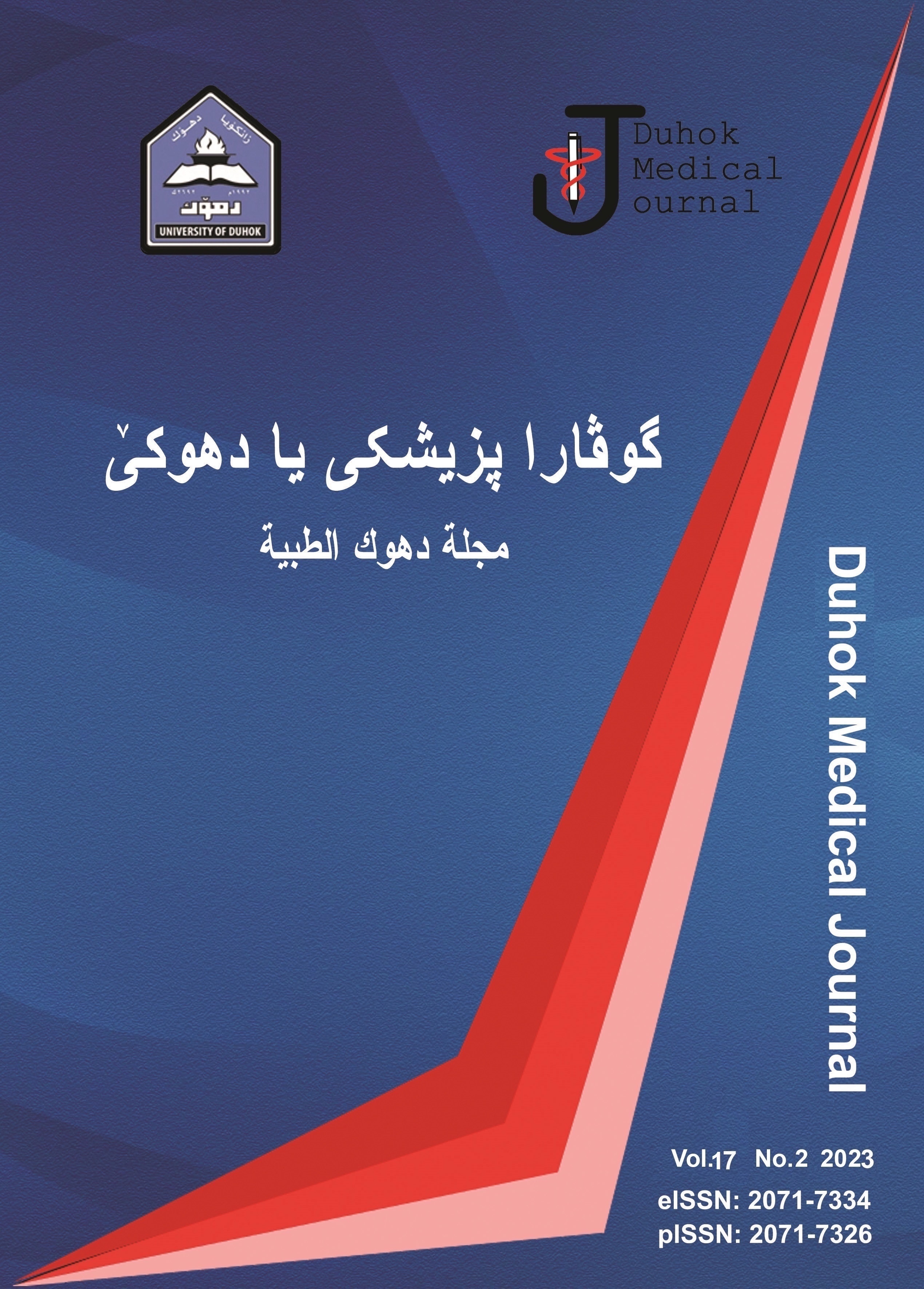MANAGEMENT OF HIRSUTISM IN CLINICAL PRACTICE
Abstract
https://doi.org/10.31386/dmj.2023.17.2.7
Background: Hirsutism is the excessive growth of terminal hair in a typical male pattern in a female. It is a distressing and relatively common problem, affecting 5 to 10% of premenopausal women in the general population. Moreover, hirsutism is often associated with decreased quality of life and significant psychological stress. This study aims to assess prevalent current practice of our clinicians related to the management of hirsutism in Kurdistan region of Iraq.
Subjects and Methods: An electronic questionnaire on current practice concerning the management of hirsutism was sent through e-mail to 190 clinicians. 166 of doctors completed the survey and were of from different specialties (endocrinologists, general internists, obstetricians, family medicine, general practitioners), from different cities of Kurdistan region of IRAQ (Duhok, Sulaymaniyah, Erbil, and Halabja).
Results: Whilst 81 (48.8%) of all the responders assessed the severity of hirsutism clinically by applying Ferriman–Gallwey hirsutism scoring system or equivalent score, the remaining 85 (51.2%), consisting majority of responders, did not carry out any assessment for severity of hirsutism. Regarding exclusion of malignancies, 92.8% of responders, said that they are asking routinely for alarming signs and symptoms of malignancies. Concerning exclusion of hyperandrogenism workup, 92.2% of responders were routinely asked about hyperandrogenism workup. The last question was about the preferred androgen suppressive therapy only 41.0% of responders treat hirsutism by a combination of OCP plus androgen blocks.
Conclusion: We found that the current clinical practice for the management of hirsutism is not standardized with many gaps in the practice. Therefore, it is necessary to develop national guidelines for management and treatment of hirsutism.
Downloads
References
2. McKnight E. The prevalence of “hirsutism” in young women. Obstetrical & Gynecological Survey. 1964 Dec 1;19(6):988-92.
3. Ekbäck M, Wijma K, Benzein E. “It is always on my mind”: Women's experiences of their bodies when living with hirsutism. Health care for women international. 2009 Apr 27;30(5):358-72.
4. Rosenfield RL. Hirsutism. New England Journal of Medicine. 2005 Dec 15;353(24):2578-88.
5. de Kroon RW, den Heijer M, Heijboer AC. Is idiopathic hirsutism idiopathic?. Clinica Chimica Acta. 2022 Mar 12..
6. Azziz R. The evaluation and management of hirsutism. Obstetrics & Gynecology. 2003 May 1;101(5):995-1007.
7. Mihailidis J, Dermesropian R, Taxel P, Luthra P, Grant-Kels JM. Endocrine evaluation of hirsutism. International journal of women's dermatology. 2017 Mar 1;3(1):S6-10.
8. Shah D, Patel S. Hirsutism. Gynecological Endocrinology. 2009 Jan 1;25(3):140-8.
9. Azziz R, Carmina E, Sawaya ME. Idiopathic hirsutism. Endocrine reviews. 2000 Aug 1;21(4):347-62.
10. Mimoto MS, Oyler JL, Davis AM. Evaluation and treatment of hirsutism in premenopausal women. Jama. 2018 Apr 17;319(15):1613-4.
11. Prassopoulos V, Laspas F, Vlachou F, Efthimiadou R, Gogou L, Andreou J. Leydig cell tumour of the ovary localised with positron emission tomography/computed tomography. Gynecological Endocrinology. 2011 Oct 1;27(10):837-9.
12. Escobar-Morreale HF, Carmina E, Dewailly D, Gambineri A, Kelestimur F, Moghetti P, Pugeat M, Qiao J, Wijeyaratne CN, Witchel SF, Norman RJ. Epidemiology, diagnosis and management of hirsutism: a consensus statement by the Androgen Excess and Polycystic Ovary Syndrome Society. Human reproduction update. 2012 Mar 1;18(2):146-70.
13. Rosenfield RL. Hirsutism. New England Journal of Medicine. 2005 Dec 15;353(24):2578-88.
14. Vinogradova Y, Coupland C, Hippisley-Cox J. Use of combined oral contraceptives and risk of venous thromboembolism: nested case-control studies using the QResearch and CPRD databases. bmj. 2015 May 26;350:h2135.
15. Zimmerman Y, Eijkemans MJ, Coelingh Bennink HJ, Blankenstein MA, Fauser BC. The effect of combined oral contraception on testosterone levels in healthy women: a systematic review and meta-analysis. Human reproduction update. 2014 Jan 1;20(1):76-105.
16. Oner G, Muderris II. A prospective randomized trial comparing low-dose ethinyl estradiol and drospirenone 24/4 combined oral contraceptive vs. ethinyl estradiol and drospirenone 21/7 combined oral contraceptive in the treatment of hirsutism. Contraception. 2011 Nov 1;84(5):508-11.






